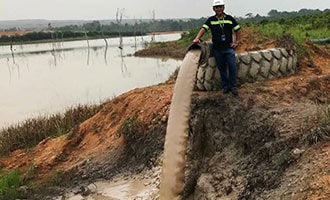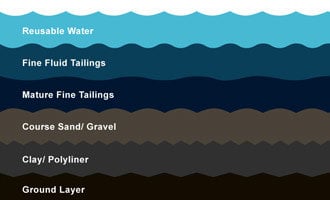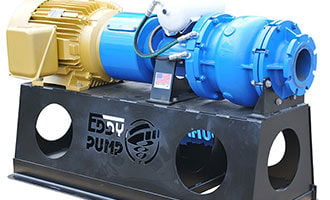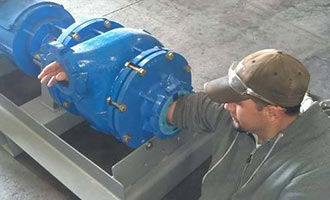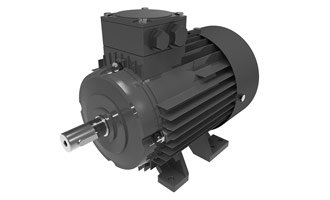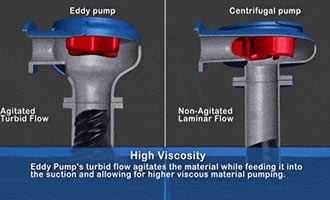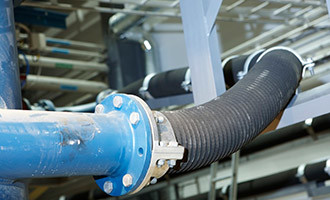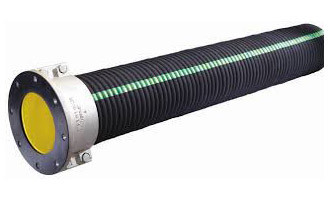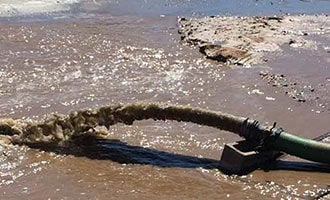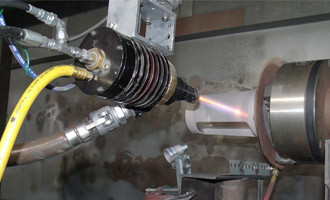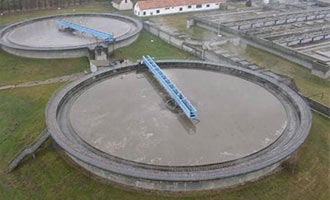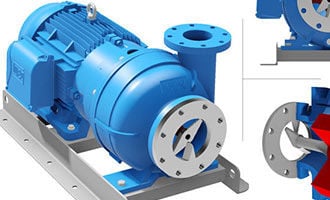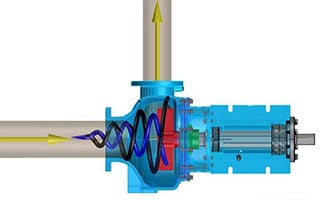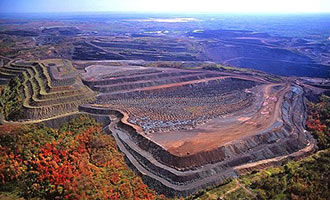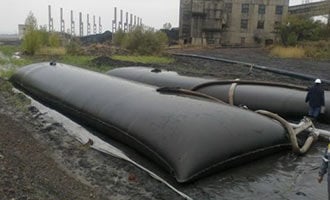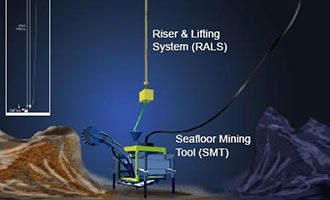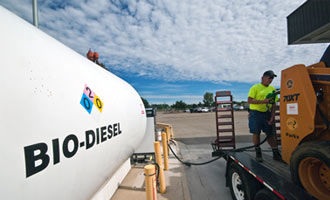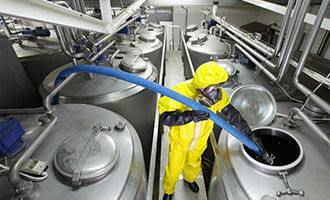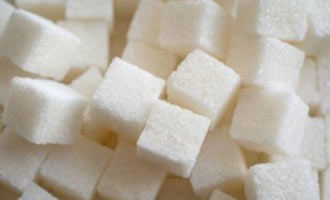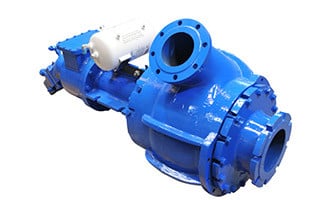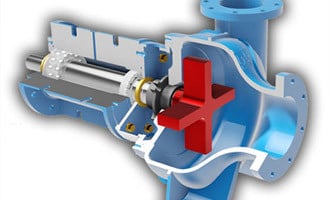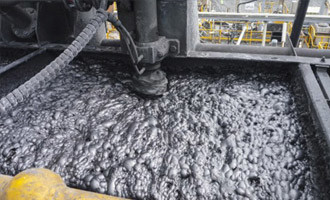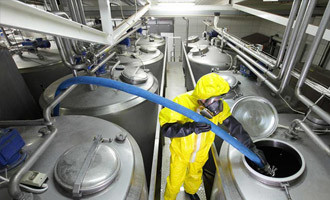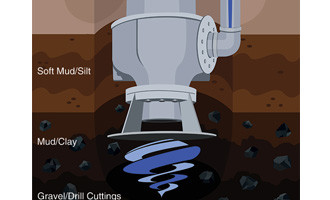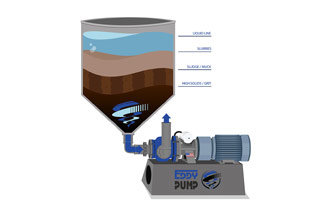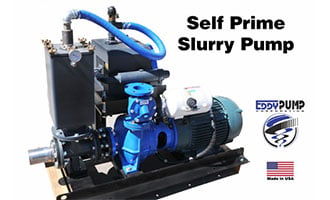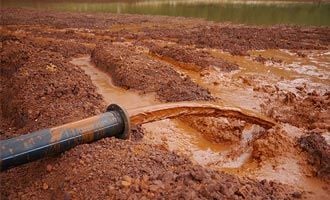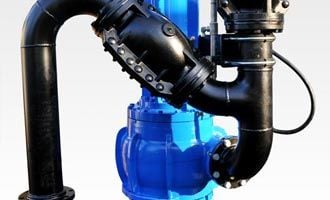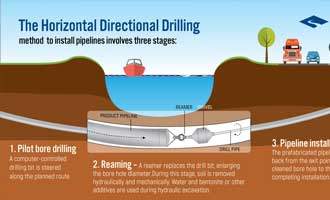Eddy Current Pumps - Applying the Power of Fluid Dynamics to The EDDY Pump
Our extensive knowledge of fluid dynamics as it relates to pumps combined with our 30+ years experience in structural engineering allows us to provide completely optimized pumps and dredging equipment with adjoining pipelines and hoses. Browse Our ProductsContact Us For a Fast QuoteWhat is in Eddy Current in Fluid Dynamics?
In fluid dynamics, eddy currents can be defined as fluids whose flow direction differs from that of the general flow, thereby making the motion of the whole fluid the net result of the movements of the eddies that compose it. In more layman terms, it is the swirling effect of a fluid and the reverse current created when the fluid is in a turbulent flow system such as a pump and pipeline setup. An eddy has the inherent ability to impart far more energy within the fluid than a nonturbulent or laminar flow by transferring energy from the initial large eddies to smaller eddies which creates a turbulent cascading effect.
The easiest way is to think of the EDDY Pump as a pump that harnesses the power of a tornado. The specially engineered, ultra-recessed rotor creates this tornado effect allowing the EDDY Pump to have no critical tolerances, move a much higher percentage of solids than traditional pumps.
Flow composed primarily of eddies are turbulent in nature and generally occur in higher frequency as the velocity of the fluid is increased. This phenomenon is often cited as the Reynolds number, which is a number used to determine when turbulent flow will occur in any given system. Therefore, the Reynolds number, as it relates to fluid dynamics, can be described as basically the ratio between the inertial forces and viscous forces of the material. At a lower Reynolds number, the flow is more laminar in nature and the higher the Reynolds number, the flow becomes more turbulent due to the differences in the fluid’s speed and direction, which is what an eddy current accomplishes. Eddies only occur when the flow reaches a critical velocity, forming a flow of fluid into space behind the pump rotor, and this inflow begins only when the general flow is fast enough to produce a lowered pressure there.
EDDY Pump Technology and History
EDDY Pump was founded in 1984 by Dr. Harry Weinrib, a successful cardiac surgeon, began to develop a brilliant idea for a new type of pump based on the fluid mechanics of eddies. What started as a side project soon turned into a fully formed, international OEM Pump and Dredging services company called Eddy Pump and Tornado Motion Technologies, respectively. Years later, the two company were merged into EDDY Pump to put more focus on research and development and manufacturing with the goal of building top of the line slurry and solids handling pumps, in addition to innovative and versatile dredging equipment worldwide.
In addition, EDDY Pump Corporation has been honored to serve onboard US Navy and Military Sealift Command ships for over 25 years in CHT Systems (Collection, Holding, and Transfer), Brine, and Gray Water Pumping Applications. We have a strong history and reputation for building robust marine pumps, saving the Navy over $17 million dollars over the course of 4 years, conducted by an independent study.
Take a look at an independent cost analysis for the Navy comparing the EDDY Pump to a competitor here.
Since then, EDDY Pump products have become world-renowned for their ability to easily pass large solids, highly viscosity materials, as well as highly abrasive material with minimal wear to the EDDY Pump when compared to the industry standard centrifugal pump. Pump operators will often try centrifugal pumps in an attempt to try to pump these tough materials, however, this more often than not leads to destroying or clogging the centrifugal pump’s critical components within weeks or even days, depending on the material. This all results in unwanted downtime, loss of production, and frequent costly repairs.
The EDDY Pump is the heart of all of our equipment used worldwide for a multitude of industries, governments, and municipalities for pumping the toughest of materials. The EDDY Pump is used extensively in several key industries including mining, dredging, oil drilling, oil sands extraction, sand/gravel, paper/pulp, wastewater, environmental remediation and many, many more.

Fully assembled EDDY Pump easily lets a man’s arm pass through. Rags, 1-12 inch rocks and debris can easily pass through an EDDY pump.
The EDDY Pump aims to solve these issues by having the ability to pump objects up to 12 inches in diameter, leaving clogged pumps a thing of the past. Additionally, due to the highly recessed rotor, less material comes into contact with the EDDY Pump internal components, allowing the pump to run for far, far longer without any downtime or maintenance, greatly reducing your overall production costs.
How the EDDY Pump Works
The EDDY Pump starts with a hardened outer pump casing built around a vortex generating rotor which generates a column of fluid which swirls around a central axis. This fluid is directed through the pump intake to the discharge into a body of liquid at which its energy is quickly dissipated. The surrounding ambient liquid is drawn through the pump inlet in a counterflow to the vortex column flow and flows into the pump casing and then out through a pump discharge. The vortex generating rotor has channels of decreasing size converging toward the axis of the vortex column with the streams of liquid increasing their respective velocities as they flow toward the axis at which the streams join and concentrate their energies to form the vortex column. The EDDY Pump can be powered by hydraulic or electric, depending on the needs of our end clients.
We are one of the few companies who manufactures both our pumps and dredging equipment to ensure optimal support.

Research and Development of the EDDY Pump
EDDY Pump has dedicated engineers for pump modeling and analysis based on the physics of an eddy current. We can go from product concept to modeling and then pump out a 3D printed test unit within 48 hours. Heavy investments have been made company-wide in hardware and software to assist our research and development team.
Our comprehensive knowledge of fluid dynamics as it relates to pumps combined with our experience in structural engineering allows us to develop fully optimized pumps and dredging equipment with adjoining pipelines and hoses. Our research and development utilize computational fluid dynamics (CFD) software to accurately calculate flow uniformity across the system and meet the needs of our clients.
At EDDY Pump, we are constantly striving to improve and innovate new technologies to incorporate into our pump and dredging equipment.
EDDY Pump has dedicated engineers for pump modeling and analysis based on the physics of an eddy current in order to make the pump as efficient as possible. We can go from product concept to modeling and then pump out a 3D printed test unit within 48 hours. Heavy investments have been made company-wide in hardware and software to aid our research and development team in creating the toughest, most efficient slurry pumps and dredging equipment available.
Our comprehensive knowledge of fluid dynamics as it relates to pumps combined with our experience in structural science and engineering allows us to develop fully optimized pumps and dredging equipment with adjoining pipelines and hoses. Our research and development team utilizes powerful computational fluid dynamics (CFD) software to accurately calculate flow uniformity across the system and meet the needs of our clients.
At EDDY Pump, we are constantly striving to improve and innovate new technologies to incorporate into our pump and dredging equipment.

EDDY Pump Components
The EDDY Pump consists of an:
(1) energy generating rotor attached to the end of a
(2) drive shaft and placed within a
(3) volute. . As the rotor begins to spin, it sets into motion the ambient fluid present within the volute and
(4) adjoining intake chamber. At normal operating speed, this spinning fluid is forced down, into the hollow center of the intake chamber where it creates a high speed, swirling synchronized column of fluid
(5) which agitates the material
(6) to be pumped (sludge, sand, clay etc.) This swirling column of fluid creates a peripheral
(7) “eddy” effect which causes the agitated material to travel by reverse flow, up along the sides of the intake chamber, into the volute. Here the material, under pressure from below, is forced into the
(8) discharge pipe.
Related Products
HD (Heavy Duty) Slurry Pumps
Why EDDY Pumps Are Better – Highlights
This video shows how EDDY Pump outperforms centrifugal pumps when pumping high solids abrasive, viscous or corrosive slurries.
Why EDDY Pumps Are Better - Highlights
This video shows how EDDY Pump transports high slurry and abrasive materials. Featured dredge pump equipment includes the Remote Operated Subdredge, Diver Operated Pump and a Excavator Attachment Dredge Pump.




